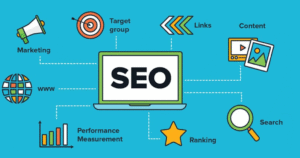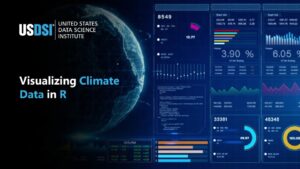Global Learning Reimagined: The AI Revolution in Education and What Follows
Think about walking into just about any classroom and finding learning that takes shape around the needs of every student,...

Think about walking into just about any classroom and finding learning that takes shape around the needs of every student, and that future is already here. 71 percent of teachers and 65 percent of students believe that intelligent tools are essential for success in college and working life, according to the World Economic Forum. At the same time, 60 percent of educators, according to Forbes, are using these tools every day to automate and streamline routine tasks, including grading quizzes, tracking student and teacher progress, and generating student practice, all allowing teachers and students to create more time for advisories and meaningful feedback.
Let’s discuss how innovations such as virtual tutors, K‑12 pathways to certification, and many more are radically innovating education across the planet and what opportunities the future of education brings.
Personalized Learning: From One-Size-Fits-All to Individualized Progress
Today’s personalized learning means that systems evaluate how each student is thinking and learning, in real time, and adjust lessons by providing more examples when needed or moving on when the student is ready. For example, Squirrel AI in China creates a knowledge-graph framework that maps, in an associated contextual space, the mastery of concepts by a student and provides context-specific, individualized exercises. This allows students to keep progressing at their own pace, neither behind nor rushed, focusing on depth of understanding rather than just finishing a syllabus.
Closing the Education Gap with Smarter Tools through AI Powered Learning
One of the most compelling arguments in support of AI in education is that it is likely to democratize high-quality learning. In areas with little support or low-resource contexts, AI-powered tools can address language barriers, facilitate remote instruction, and create inclusive opportunities for learners with disabilities.
This table summarizes relevant examples of work to enact inclusive and equitable AI learning:
| Initiative | Description |
| Digi-Wise & Ferby Chatbot | Delivers AI education to low-resource learners globally |
| AI Tools for Non-English Learners | Customized content for linguistic minorities |
| AI for Disabled Students | Tailored learning tools like text-to-speech, emotion recognition |
| Open-Source AI Textbooks | Freely accessible and personalized learning content |
K12 AI Certifications: Building Skills from an Early Age
AI education has established itself as a foundational K12 curriculum around the world. AI literacy is considered as critical as literacy or numeracy. Globally, more institutions are establishing K12 AI programs and initiatives to help prepare students early for AI-related careers.
Here’s a general breakdown of how formal education is getting AI skills:
| Education Level | AI Education Strategy |
| K12 | AI literacy, coding, machine learning basics |
| Undergraduate | Interdisciplinary AI courses, ethical AI training |
| Vocational | Job-oriented AI certifications and project-based learning |
| Lifelong Learning | Micro-credentials and stackable AI courses |
Top AI certifications are helping students create solid foundations in this area and boosting future academic and career possibilities. Here are a few examples:
- USAII® K-12 Certified Artificial Intelligence Prefect: A course designed for school students in grades 9 to 10, to start learners in the world of AI with basic constructs, understanding AI in the real world, and considering ethical use in a simple, interactive, self-paced environment.
- USAII® K-12 Certified Artificial Intelligence Prefect – Advanced: An advanced course for students in grades 11 and 12, draws students further along the pathway towards machine learning, data patterns, and AI logic.
- MIT RAISE Initiative (Responsible AI for Social Empowerment and Education): Programme designed to incorporate AI literacy in K–12 education; it’s part of a holistic approach that targets K-12 and includes curriculum, summer opportunities, and teacher training with a focus on responsible, ethical, and inclusive AI learning opportunities.
Empowering Educators: Technology as a Teaching Assistant
There is a misunderstanding that technology will replace teachers. Digital tools are relieving some of the burden on teachers rather than replacing them. Digital tools are being used to aid with lesson planning, grading, or simply keeping track of student progression to allow teachers more time to create lessons and connect emotionally with their students. Educators will go through training to understand effective use of these digital tools, including ethical use, protection of data, and transparency in digital systems.
Challenges and Considerations
As education changes, certain contemporary methods also provide new difficulties:
- Academic Integrity: Auto-generated material can create misuse and make it difficult to uphold academic integrity.
- Data Privacy: There is a need to protect student data from improper use and align with proper ethical practices.
- Fairness: Automated systems must be checked frequently against the risk of biased outcomes and judgments, such as grades or recommendations.
- Over-reliance on technology: Continuing to spend excessive amounts of time on screens will limit creativity and social skills.
What Comes After AI Integration?
When thinking of the potential evolution, the next phase of global education through AI could involve:
- AI Driven Emotional Intelligence Tools: These systems will seek to understand and respond to students’ moods and emotions.
- Augmented Classrooms: Combining AI with AR/VR to create immersive and interactive learning environments.
- Global Credentialing Systems: Badging and micro-credentials that have international recognition.
- AI Policy Literacy: Enabling learners to be critical thinkers in terms of AI governance and social impact.
Overall, as we move away from traditional education systems to AI learning systems, education may shift from a form of content-based structure to a skills and adaptability structure. This means that lifelong learning, with the help of AI, will be vital to start their AI career.
Conclusion
AI is changing the face of education everywhere, with the promise of personalized learning opportunities, reduced inequities, empowered teachers, and preparing learners for occupations of the future. However, with this change comes accountability. All stakeholders must work toward using AI tools ethically, inclusively, and transparently. When supported with the infrastructure, training, and policy, AI will change not only how we learn, but also it will redefine why we learn, who we learn with, and, as importantly, what future we are learning for.



